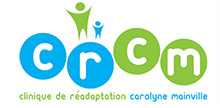Cutting is an activity that requires multiple skills. It is not uncommon for children to have difficulties in cutting and making crafts, considering the complexity of the task. In fact, the child needs good motor control, like in the shoulder, elbow, wrist and even the fingers, which move in isolation to open and close the scissors. The child must use both hands equally together, like in turning paper in one fluid motion. This requires good timing and good bilateral integration. In addition, organizational skills and perception come into play; the child must use the right moves according to what he perceives (shape, line, direction, etc.). We also have to consider the child’s attention span and interests!
Normally, at about two years of age, the child should be able to take the scissors with both hands and make the motion of opening and closing, with supervision! At three years old, the child should hold the scissors in one hand and begin to cut a small strip of paper or make cuts. At 5 years old, it is expected that the child can cut out a circle about 7 cm in diameter, keeping within the line (the standard deviation is about 0.3 cm).
Here are some suggested activities:
Play with tongs, tweezers or clothes pins
to pick up objects. It promotes finger
movement!
Cut pieces of plasticine/clay to promote
the opening and closing of scissors. Cut
pieces of straw into small sticks and
insert into the plasticine/clay!
Start with pieces of cardstock. The motor
planning will be easier!
First cut notches or straight lines on a
wide line. Decrease the size of the line
when the child becomes more accurate.
Make holes in cardboard with a hole
punch; the child must cut in the holes.
Cut out rectangular shapes to work on
changing direction. Try rounded and
irregular shapes! Have fun!
To develop cutting skills, make sure:
you have good scissors according to the hand
preference of your child!
you encourage a good scissors grip. The thumb
should be in the upper loop while the index and
middle finger should be in the lower loop. For greater
stability, the index finger can also be under the
scissors, while the middle finger is in the lower loop.
you encourage the child to keep the elbows close to
body. The thumb should remain up and the
shoulders should not move. The opposite hand
should turn the paper.
info@crcm.ca – www.crcm.ca



Leave A Comment